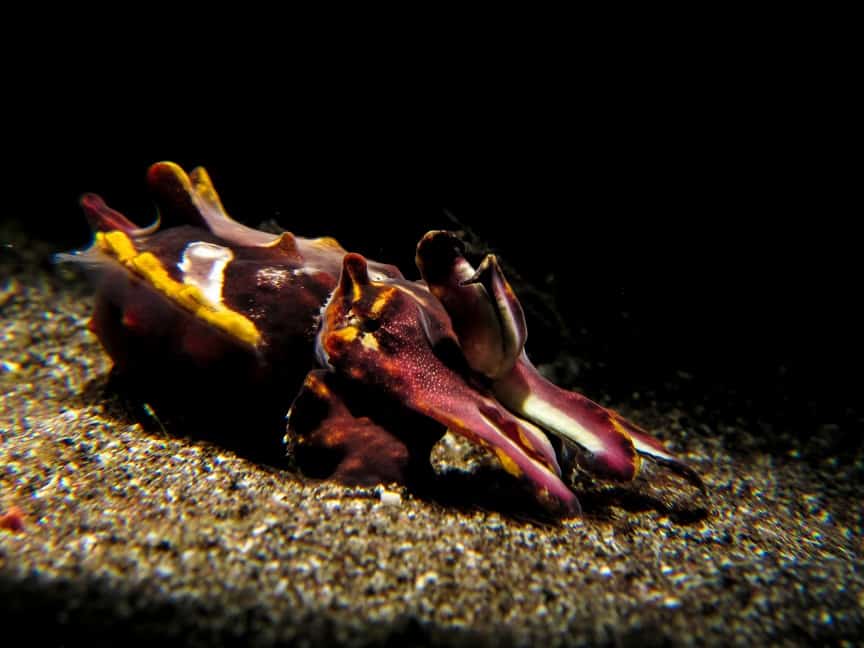The next group of animals we are going to be talking about in the Cephalopods of Lembeh, is the types of Cuttlefish commonly found around Lembeh. The 3 most common Cuttlefish you might come across under the water in Lembeh are the Broadclub Cuttlefish, Dwarf Cuttlefish and Flamboyant Cuttlefish.
The biggest of these cuttlefish is the Broadclub. They are easily identified as they can be around 50cm long and hover above the sand or coral reefs. They are found almost entirely during daylight hours and if approached slowly you can get really quite close to these creatures. When they are adults they are quite impressive with their size but we also see juveniles who may only be 2-3cm!
These cuttlefish tend to be predominately white in colour and they hide under small anemones and under small coral ledges. They are usually more shy and back away from divers as they approach. They can also be found in groups of 2 or 3 hiding under the same anemone patch.
One of the smallest cuttlefish we get here is the aptly named Dwarf Cuttlefish. This cuttlefish reaches a maximum length of barely 5cm and can be found only at night. They may just look like a juvenile cuttlefish on first glance but they can be identified by some distinct blue spots on their fin. However due to their shy nature you may not get close enough to see these spots clearly and most identification comes when reviewing the pictures!
The most exciting cuttlefish found in Lembeh is the magnificent Flamboyant Cuttlefish. These cuttlefish are one of the most striking animals you can see under the water anywhere in the world! Like all cephalopods they can change their colours using the chromatophores in their skin. However, while the others do this to make themselves camouflaged against the sand or reef the Flamboyant Cuttlefish has a different tactic. They show off their beautiful colourful display in all its glory. The Flamboyant Cuttlefish is actually incredibly poisonous, as potent as that of the Blue Ring Octopus! However the ‘Flambo’ cannot utilise this for offence and as such flashes its bright colours as a warning for potential predators. While these colours may deter other animals from eating it the same behaviour attracts divers and photographers! Fortunately for us the Flambo very rarely swims and actually uses its lower arms and body to walk across the sandy bottoms, making them a slow and relatively easy photo subject.
There are a few other species of Cuttlefish that you may come across in Lembeh but they are much less common. Fortunately our guides have seen them all and will be able to help ID anything that you come across under the water. Have you seen any of these cuttlefish in Lembeh? Which is your favourite?







